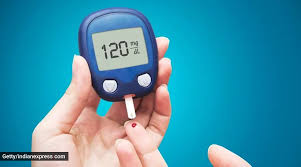The inaugural World Prediabetes Day was held on August 14, 2021, by the Endocrine Society of India and the South Asian Federation of Endocrine Societies. This date was chosen to be deliberately 90 days before of World Diabetes Day on November 14. This time frame was selected because increased glycosylated hemoglobin (HbA1c) levels, a crucial indicator for controlling blood sugar levels, usually require 90 days to significantly decrease.
The “window of opportunity” to stop or postpone the onset of type 2 diabetes and its related problems is represented by the introduction of the prediabetes logo in 2022. This program emphasizes how crucial it is to identify prediabetes early and take appropriate action to manage it. Prediabetes, a disorder marked by raised blood sugar levels that are not high enough to be classed as diabetes but are a precursor to it, affects about 374 million people worldwide.
A 2021 study conducted in India by the Indian Council of Medical Research–India Diabetes (ICMR-INDIAB) found that 15.3% of the country’s population, or 136 million individuals, have prediabetes. In comparison to urban regions (8.9%), the prevalence is significantly higher in rural areas (15.2%). The high incidence of prediabetes in rural regions raises serious concerns since, if left untreated, almost half of people with prediabetes could develop type 2 diabetes in three to five years. Severe complications from type 2 diabetes include cerebrovascular accidents, kidney disorders, cardiovascular diseases, and other major health issues.
Adolescents are facing an increasingly serious scenario, with up to 23% of them worldwide having prediabetes. It is said that this growing trend is a “ticking bomb,” emphasizing the immediate necessity for preventative action. According to data from the DERVAN-4 project, which examined preconception and adolescent health in India, almost 40% of teenage girls in rural areas—who are frequently malnourished—have prediabetes. This is in contrast to results from other research that more frequently associate obesity with prediabetes. Adolescent malnutrition is linked to prediabetes because it affects β-cell function and insulin secretion insufficiently, while obesity is mostly caused by hyperinsulinemia and increased pancreatic workload.
All things considered, the increasing incidence of prediabetes highlights the vital need for early intervention and management measures to stop the progression to type 2 diabetes and lessen related health risks. This is especially true for vulnerable populations including teenagers and those living in rural regions.
SOURCE :
EMEDINEXUS








